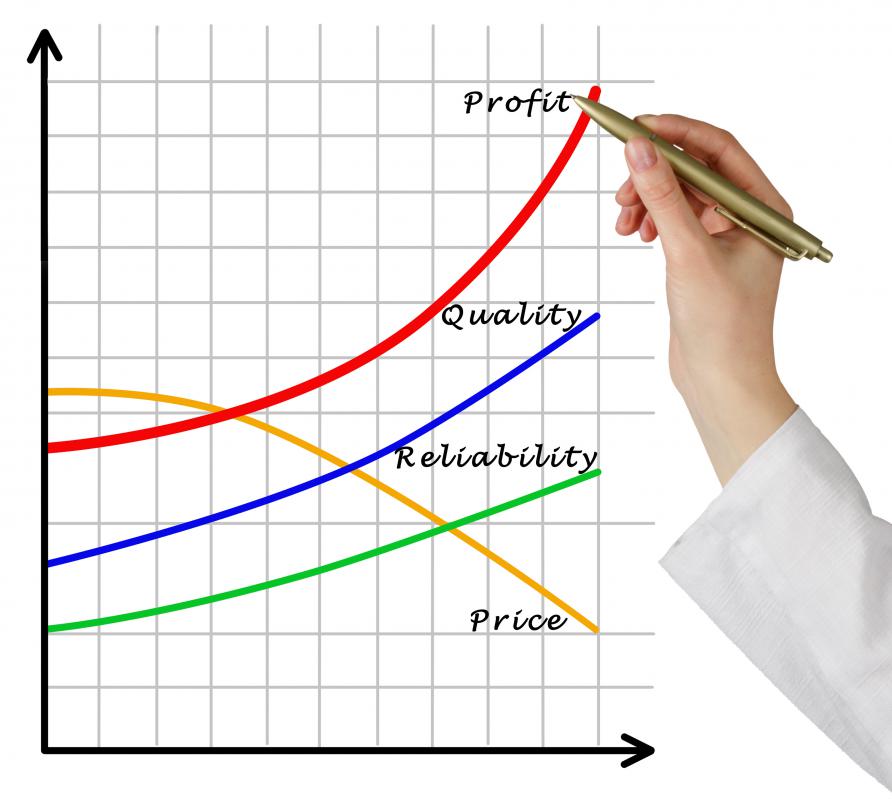At WiseGEEK, we're committed to delivering accurate, trustworthy information. Our expert-authored content is rigorously fact-checked and sourced from credible authorities. Discover how we uphold the highest standards in providing you with reliable knowledge.
What Is a Gross Profit Analysis?
Gross profit analysis represents an accounting process where a company looks at the money made from selling goods and services. The basic gross profit formula is sales revenue less the cost of goods sold. Analysis for these accounting elements allows a company to determine the profitability of selling certain goods and services. Three elements are included in this process: product price, sales volume, and product cost. Each piece plays a critical role in gross profit analysis.
Sales price represents the amount a company charges consumers for goods or services. In most cases, product price is the result of consumer demand. The other factor in price is the current supply of goods from all the companies in a business industry. Most companies look to match current price levels in order to maximize sales. In terms of gross profit analysis, setting prices too low reduces profitability, while setting prices higher than the average market price may result in consumers purchasing a competitor’s goods or services.

Sales volume has a close relationship to a company’s sales price. Gross profit analysis, however, dictates that change in actual goods or service sold and increases in product offerings or product lines will affect gross profit. While sales prices determine how many products consumers purchase, the number of products offered also play a role. This essentially goes back to the supply and demand principle discussed previously. Changes in gross profit may be the result of sales volume differences on a monthly basis.

The final piece of gross profit analysis is the cost of goods sold. Cost analysis is often the piece most companies analyze as they can control inventory costs to some degree. Manufacturers, for example, can purchase cheaper inputs to produce goods that are for sale to consumers. Cheaper inputs should result in higher profits under basic gross profit analysis. Retailers can also control inventory costs as finding less expensive goods to sell in stores should lead to higher gross profits.
Budgets prepared by the company’s accounting department can also play a critical role in gross profit analysis. A company often uses budgets to present managers with a road map of financial expectations for future operations. Each section or department in a business typically has a budget, especially manufacturers or other businesses that have copious inventory-derived sales. Budgets place constraints on spending, helping a company increase profits under gross profit analysis.
AS FEATURED ON:
AS FEATURED ON:












Discuss this Article
Post your comments